"Maa when do I need to add the patali gur while making the Dudh Puli? Also, exactly when do I need to add the Puli so that those are both soft yet well cooked?"; Debjanir Rannaghar was a complete mess when I called maa last evening!
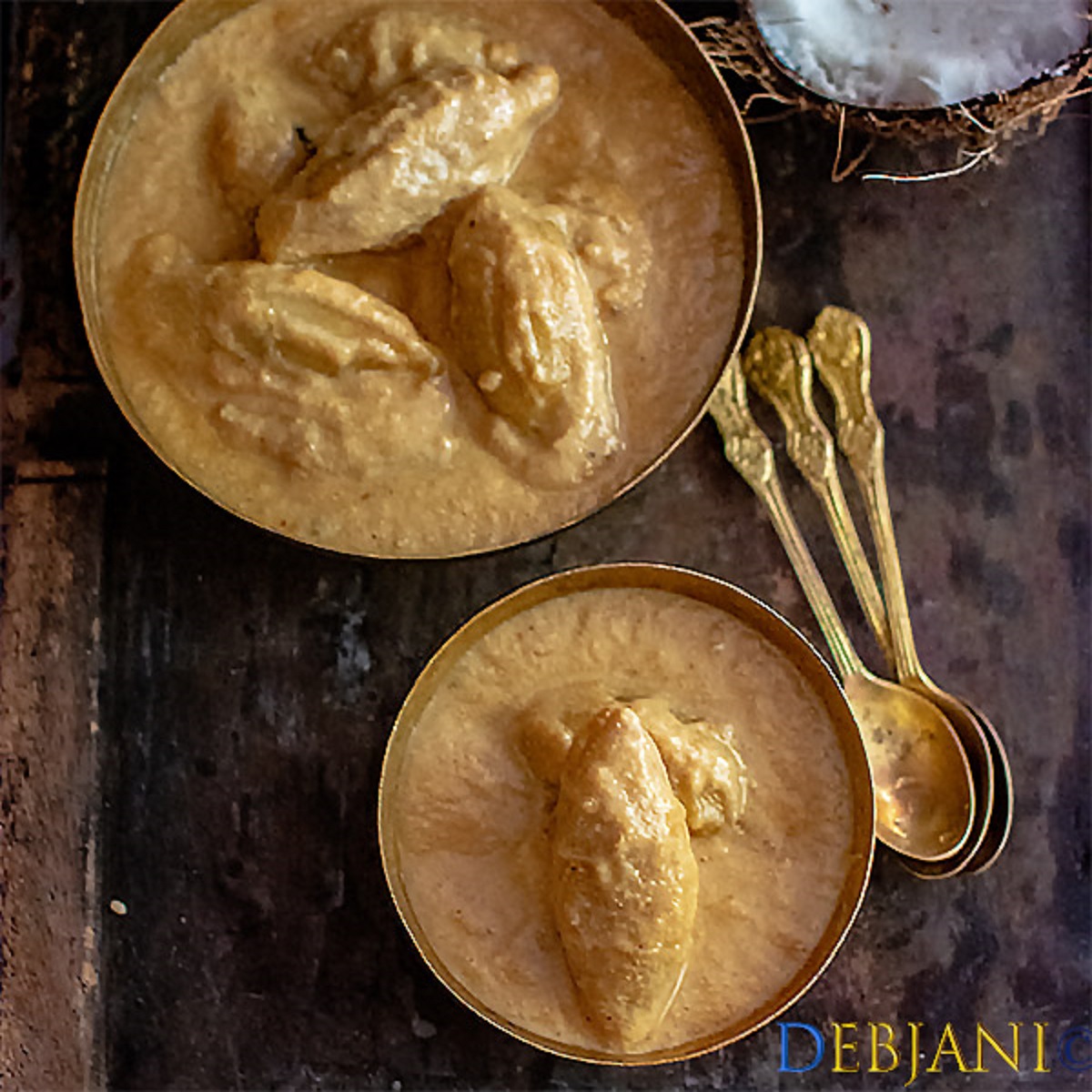
Jump to:
To celebrate the festival of harvesting on the day of Makar Sankranti I have decided to make just one dish. A family favorite, needless to say, and something my mother is an expert in making. I had little time, and little energy to make a complete platter for Poush Sankranti after a demanding day at work. Both Pasta and Mehebub (along with Rosie, Pasta's nanny) helped me a lot. The pasta was responsible for handing over all the ingredients; Mehebub was responsible for grating the coconut and Rosie was responsible for making the dough for the Puli.
Makar Sankranti Spread
With their support, I ended up making not only the Dudh Puli but also some Koraishutir Kochuri and Notun Aloor Dum last night. I ended up writing the post at around 2:30 a.m. I clicked the pictures early in the morning and scheduled the post for the evening of Makar Sankranti.
Maa has given the pro-tip that I need to mix the Gur with little milk and then I need to add that mixture to the boiling milk to avoid curdling the milk. Maa then told me to add the Puli while the milk is reduced to ⅔! I followed Maa's instruction as it is and unlike every single time ended up making Dudh Puli as good as her.
I try to follow the customs (especially which has something to do with food 😛 ) as much as possible and Makar Sankranti is one of those festivals when I try to come up with a traditional Bengali delicacy at home. My last post was about a recipe of Pithe I learned from my MIL, Narkeli Jam Pitha. This one, however, is about Dudh Puli something I have grown up eating. My mother and Aunts make amazing Dudh Puli and Dida used to make it equally good too.
Dudh Puli is a famous Bengali milk-based Payesh/ Kheer/ Pudding prepared by slow-cooking milk with Puli (also known as rice flour dumplings) stuffed with cooked coconut.
Dudh Puli Variations!
I have seen two different types of Dudh Puli being made up. At my ancestral house, Dudh Puli was always and till date prepared with Notun Gur/ Patali Gur. Dida though used to make with Sugar. Needless to say at my place Dudh Puli was always having a light brownish color and Dida's was always creamy. Tastewise both were good however, I always liked the Dudh Puli prepared with Gur instead of Sugar.
In my ancestral house, Dudh Puli is a mandatory preparation on the day of Poush Masher Lokkhi Pujo. Jethima is responsible for the puja as well as for making the food inclusive of this winter delicacy.
Which variety of Rice to use?
One thing was common in both houses. I never have seen 'em using store-bought Chaler Guro (Rice Flour) to make Dudh Puli. It was always prepared with homemade rice flour. Gobindobhog rice was the main ingredient for making Rice Flour. I also do not use store-bought Rice flour to make the Dudh Puli. It is the Gobindobhog Rice that gives an amazing and distinct aroma to the dish. In my in-law's place, they use Badshabhog rice to make the Rice Flour. Basically, most of the Pithe at ours are prepared with Shortgrain flavored rice.
Along with rice little Suji (Semolina) is used to give proper binding to the Puli aka dumplings. Grated coconut is slow-cooked with Patali Gur/ Date Palm Jaggery and this mixture is used as stuffing. This dish is all about slow cooking. Here I am going to share the recipe for making Dudh Puli with Gur. You can, however, use an equal quantity of Sugar or half and half of each to make this dish.
Here's how I make Dudh Puli at Debjanir Rannaghar!
Print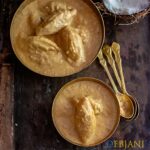
Dudh Puli
- Total Time: 1 hour 10 mins
- Yield: 10 People 1x
Description
Dudh Puli is a famous Bengali Winter special dessert prepared with milk. In this dessert dumplings prepared with rice flour and stuffed with coconut mixture known as Puli are slow-cooked with milk and Jaggery/ sugar.
Ingredients
- 2 liters Full Cream Milk
- 200g Rice Flour
- 2 Tbsp. Semolina
- 2 cup Grated Coconut
- 800g Patali Gur/ Date Palm Jaggery
Instructions
- Break the Gur/ Jaggery slabs into small chunks.
To make the Puli
- Take grated coconut in a pan and cook over a slow flame until the moisture reduces.
- Add ⅓ of the Gur and cook on low flame until the Gur dissolves and also the mixture reduces to ⅓.
- Keep stirring to avoid burning.
- Switch the flame off once the mixture started leaving the edge of the pan.
- Transfer the mixture to a bowl and keep it aside.
- Meanwhile, take Rice Flour and Semonila in a bowl and mix both.
- By adding hot water little by little make a soft dough.
- Cut the dough into 20 pieces and make small balls.
- Take a ball and flatten it using the palm and fingers as shown in the picture.
- place 1 Tbsp. of the stuffing in the middle and seal from both sides and give the puli a shape of a Half-moon.
- Keep both edges sharp and the filling will be there in the middle part. Refer to the picture for the shape.
- Make all the puli following the process mentioned.
Dudh Puli; final step:
- Take the Milk in a deep bottom vessel and start boiling it after adding one cup of water to the slow flame until the milk reduces to ⅔.
- Now take one cup of milk from the boiling milk and mix Jaggery with it.
- Add this mixture to the boiling milk and using a ladle dissolve the Jaggery.
- Now add Pulis one by one and keep cooking over low flame for around 15 minutes to reduce the moisture.
- The Milk will get thickened by then.
- Once the desired consistency is reached, switch off the flame.
- Cover the Vessel with a lid and wait at least one hour to serve Dudh Puli.
- To get the best of the flavor, serve it after at least 8 hours of cooking.
Notes
- I do not add any added flavor such as cardamom or bay leaf while making Dudh Puli with Date Palm Jaggery and Rice Flour prepared from Gobindobhog rice. This is to maximize the flavors of Jaggery and rice.
- Instead of short grain rice, you can use Basmati rice to make the Rice flour or can use store-bought rice flour.
- Instead of Gur Sugar can also be used or you can use a mixture of Gur and Sugar.
If you are using Sugar or normal rice it is better to add a few cardamoms and Bay leaves to give added flavor to the dish. - you can use fat-free milk as well instead of Full cream milk, however, that will not give richness to the dish.
- For added flavor, you can add condensed milk as well, however, in that case, reduce the sugar/ jaggery.
- Prep Time: 30 mins
- Cook Time: 40 mins
- Category: Dessert
- Method: Cooking
- Cuisine: Bengali
Nutrition
- Serving Size: 230g
- Calories: 571
- Sugar: 90.6g
- Sodium: 87mg
- Fat: 13.5g
- Saturated Fat: 9.6g
- Carbohydrates: 109.5g
- Fiber: 1.8g
- Protein: 8.6g
- Cholesterol: 0mg
Bengali Pithe/ Puli/ Payesh Recipes from Debjanir Rannaghar:
- Bengali Soru Chakli Pithe Also known as Soru Chakuli Pitha)
- Narkeli Jam Pitha (also known as Jam pithe)
- Nolen Gurer Sandesh (also known as Date Palm Fudge with cottage cheese)
- Gurer Narkel Naru (Also known as Bengali Narkel Naru/ Nariyal ki Laddu)
- Patishapta (Also known as Bengali Patishapta Pitha)
- Taler Bibikhana Pitha (Also known as Taler Pithe or Sugar Palm Cake)
- Chaler Payesh (also known as Bengali Rice Kheer)
- Choshir Payesh (also known as Chosi Payesh)
- Khejur Gurer Payesh (Also known as Bengali Rice Kheer with Date Palm Jaggery)
- Rosh Bora (Also known as Bengali Sweet Fritters served with Runny Sugar/ Jaggery syrup)
Have you tried the Dudh Puli recipe from Debjanir Rannaghar!
Do let me know how it came out. Also, I would love to see a picture of the same which you can share here at dolonchttrj@gmail.com. Meanwhile, on Instagram, you can use my hashtag #debjanirrannaghar and in addition, you can tag me at @foodofdebjani.
Doodh Pooli Recipe Pin!
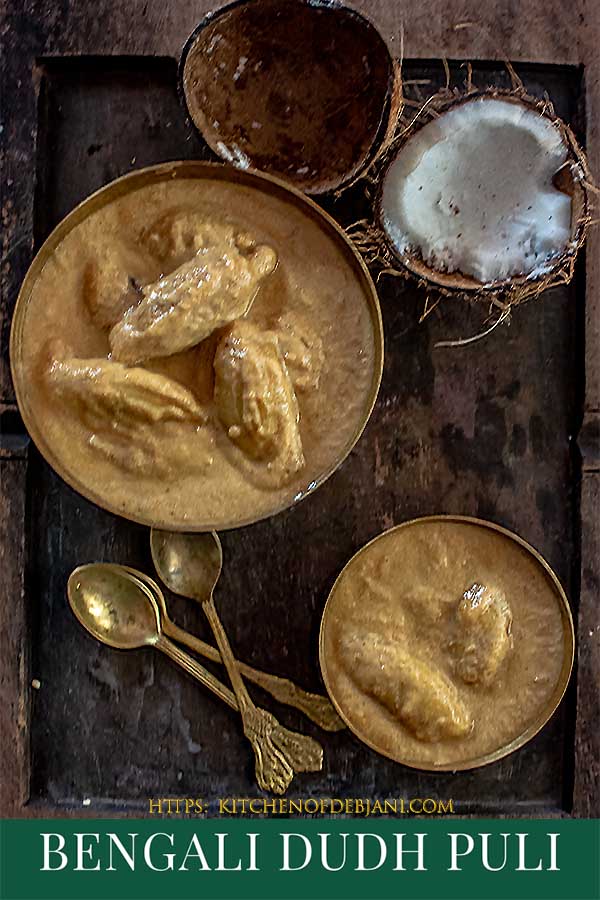

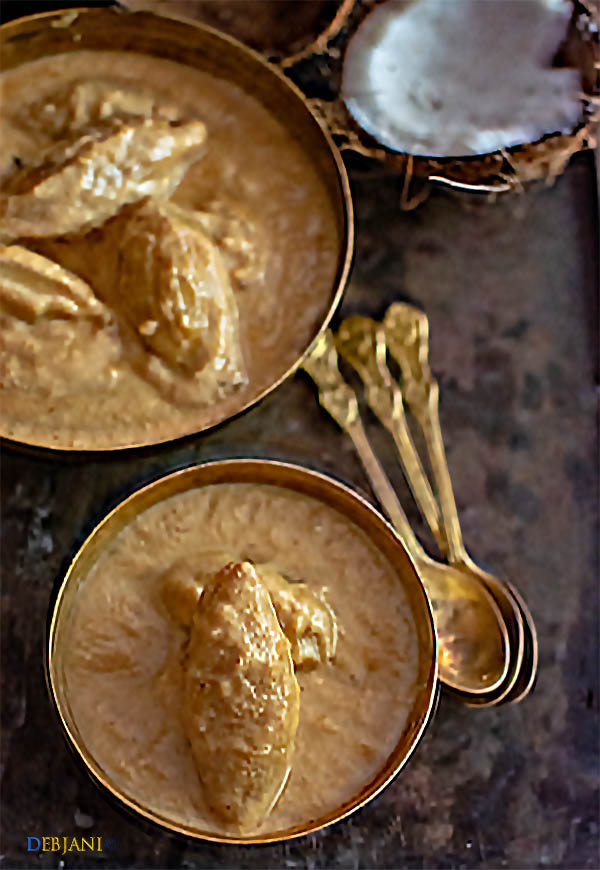
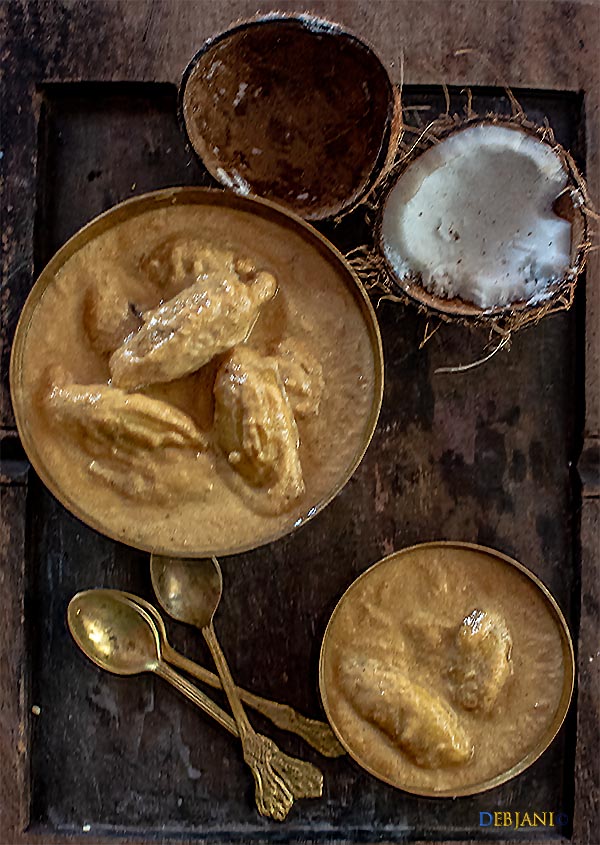
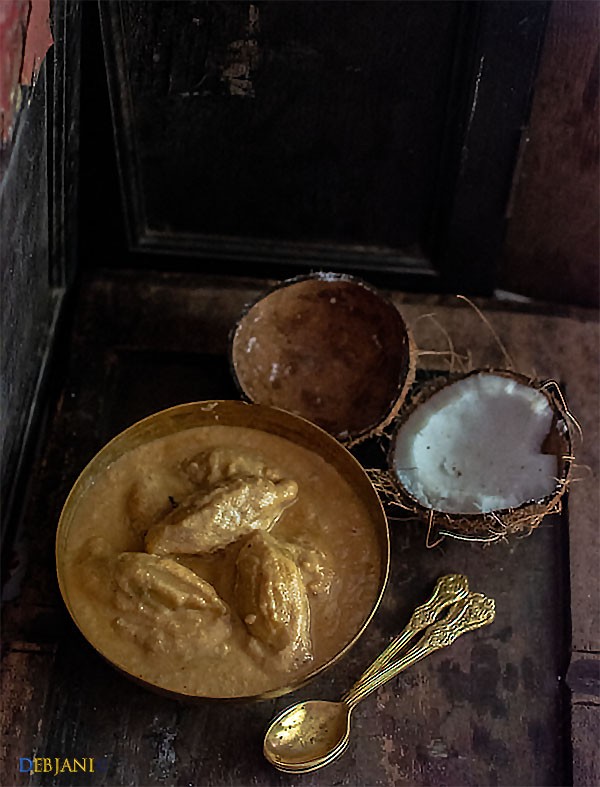
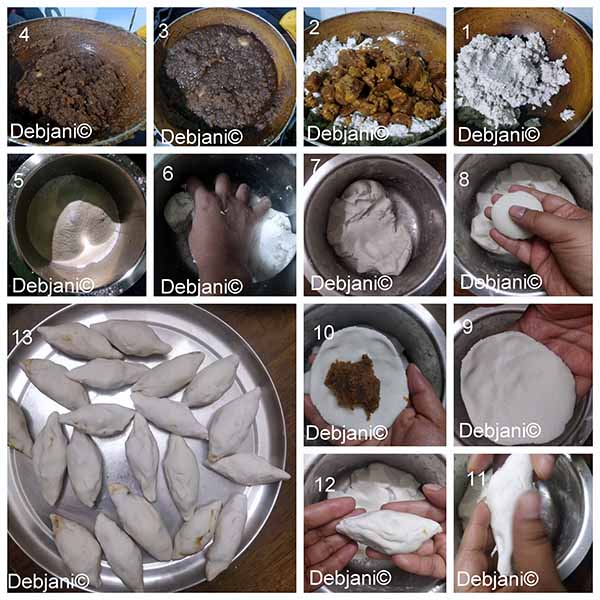
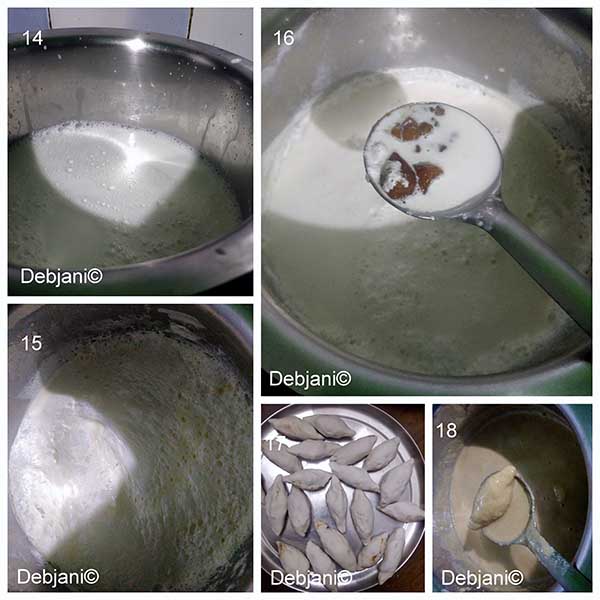



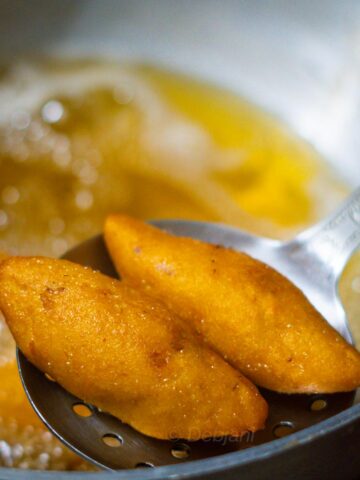
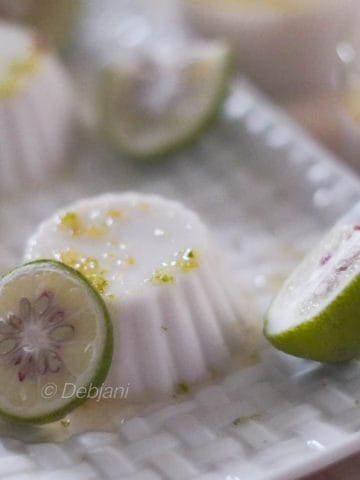
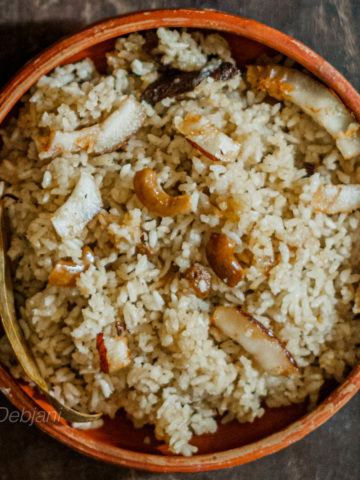
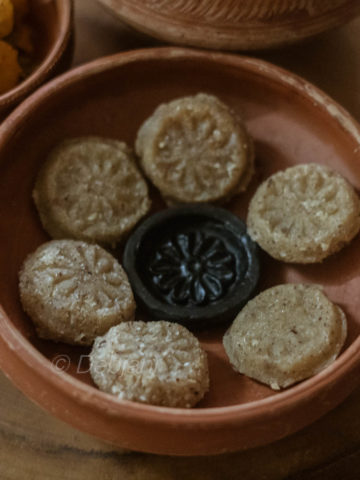
Pampa Banerjee says
ASADHARAN